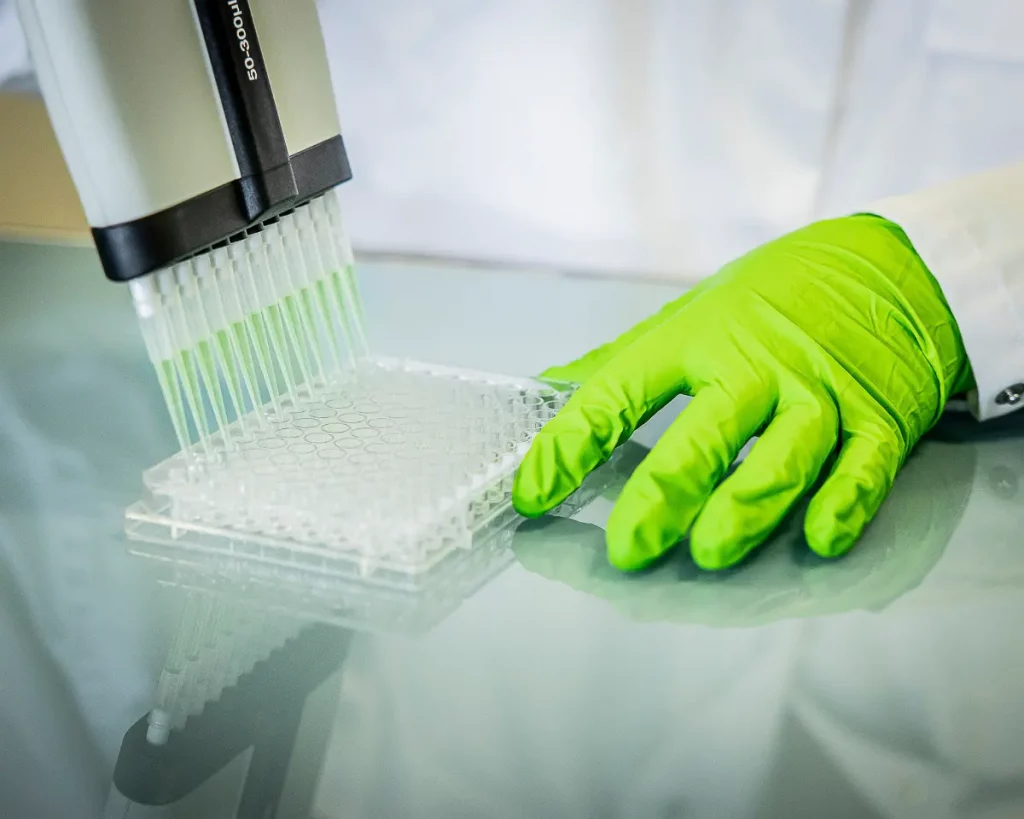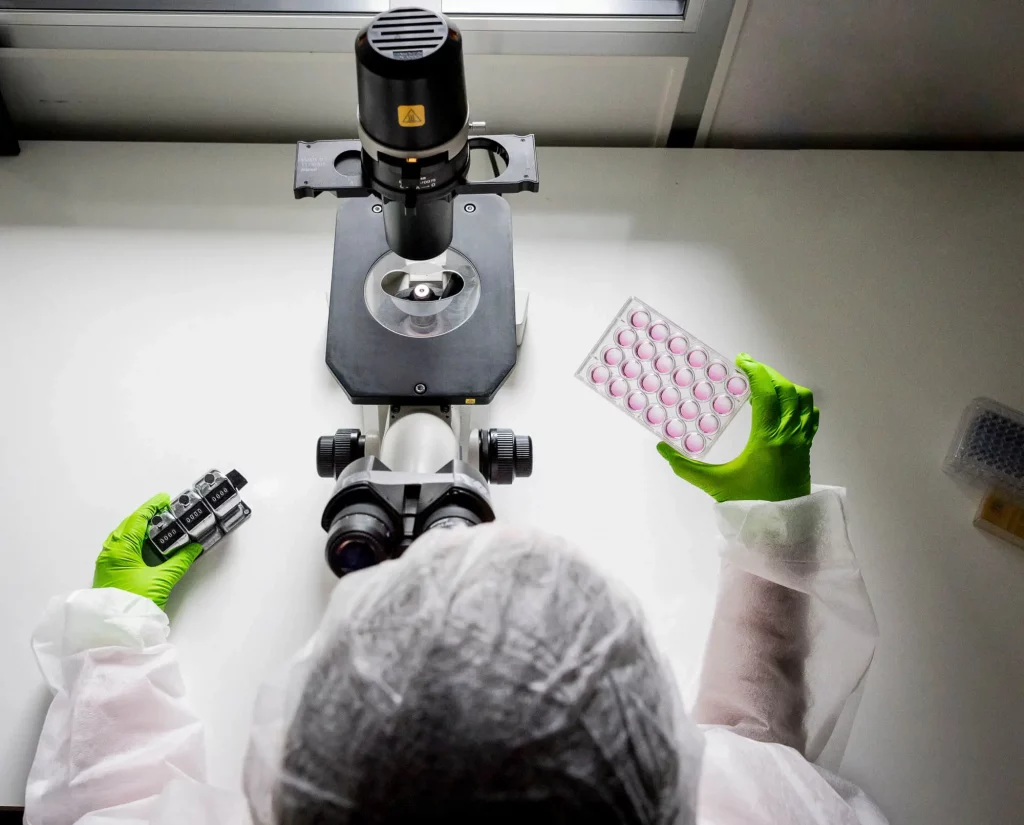Technology

Engage with specialists of the mitochondrion
Since 2009, Mitologics SAS has been supporting the discovery and development of safe and efficient molecules for the benefit of patients and the general population, in particular for pharmaceutical, cosmetic, chemical, and agrochemical compounds.
To offer a broad set of readouts analysing mitochondrial functionality and integrity, we use three complementary proprietary platforms. These platforms are dedicated to tracking mitochondrial toxicity, identifying tumour-targeting compounds and anti-cancer therapies, and characterizing compounds that protect mitochondria or restore their activity.
MiToxView®
Track and define mitochondriotoxic effects
A large variety of compounds – chemicals, peptides, natural extracts or ingredients, antibodies, recombinant proteins, siRNA, or gene expression vectors – can trigger mitochondrial toxicity in humans. As part of assessing the safety of a given molecule, it is important to investigate their toxicity with respect to mitochondria early in drug discovery.
Our MiToxView® tests were developed to predict hepatotoxicity, cardiotoxicity and overall mitochondrial toxicity risks linked to compounds. Such toxicity could have dramatic consequences for human health if undetected before administration. Thanks to a wide variety of readouts, we can deliver customized results supporting and helping to refine studies.

As a medium-throughput in vitro screening platform, MiToxView® – relying on well-characterized healthy mitochondrial models – can provide consolidated data helping you to:
- Determine potential mitochondrial toxicity of your compound in vitro,
- Screen and rank compounds based on their mitochondrial effects,
- Understand the mechanism of a compound’s mitochondrial toxicity (energy metabolism, mitochondrial integrity, mitochondrial dynamics, etc.),
- Assess the impact of mitochondrial toxicity of your compound at the cellular level (e.g., induction of oxidative stress, cell death),
- Predict the in vivo (human) mitochondrial toxicity of your compound (hepatotoxicity/DILI, cardiotoxicity, etc.),
- Analyse mitochondrial damage in pre-clinical and clinical biological samples.
This technological platform uses both commercial kits and assays developed in-house performed on isolated mitochondria, whole cells, or tissues. MiToxView® assays are reliable, reproducible, and standardized thanks to Mitologics’ SOP.
MitoPathway®

Identify specific anti-cancer drugs and explore their Mode of Action
Mitochondria play a crucial role in ‘life and death’ of the cell by regulating many bioenergetic and signalling pathways. Therefore, in oncology, targeting mitochondria in tumour cells is a relevant therapeutic strategy. Thanks to a wide variety of readouts we provide customized analysis to support and refine your studies.
MitoPathway® is a medium-throughput in vitro testing platform that detects changes in mitochondrial function and integrity induced by potential anti-cancer drugs or cell therapies.
This technological platform uses well-characterized mitochondria isolated from healthy and cancerous cells, and a large library of tumour cell lines. The consolidated data can help you to:
- Select compounds targeting tumour mitochondria without affecting healthy mitochondria. These assays are instrumental when selecting compounds to kill cancer cells while preserving healthy cells. Our assays contribute to increasing the safety margin for compounds in development,
- Identify compounds inducing cancer cell death by assessing how they affect the intrinsic apoptotic pathway (e.g., acting as MOMP inducers),
- Discover or validate the mode of action of compounds (e.g., targeting Bcl-2, the respiratory chain, or mitochondrial permeability transition pore (mPTP), etc.),
- Explore a compound’s impact on tumour cell metabolism. Mitochondria are a key component of the Warburg effect and tumour cell adaptation to their environment and to chemotherapy,
- Characterize mitochondrial fitness and cell metabolism in immune cells to investigate cell fate. Our metabolic assays play a part in the development of more effective and sustainable immunotherapy by harnessing the immune response/memory balance.
MitoXpert®
Reveal the Mode of Action of compounds and assess their efficacy to protect or restore mitochondrial functions
Mitochondrial dysfunction plays a crucial role in several pathologies representing a major health burden, including cardiovascular, metabolic, and CNS diseases, mitochondria-related pathologies, etc. Novel therapeutic strategies are being developed aiming to protect mitochondria and restore mitochondrial function.
Thanks to a wide variety of pertinent and specific readouts, our MitoXpert® platform provides tailored assays to detect compounds that protect mitochondria against stress or maintain mitochondrial function in a pathological context.

Using isolated mitochondria from a range of sources and a variety of cellular models, our platform provides consolidated data to help you to:
- Identify compounds targeting mitochondria, and elucidate which of its different components are involved, such as Permeability Transition Pores, Bax/Bak channels, Respiratory Chain complexes,
- Measure direct protective effect on mitochondria subjected to calcium overload, oxidative stress or apoptotic triggers used to induce MMP,
- Assess how compounds affect critical mitochondrial functions – such as energy metabolism, MOMP, mtROS production, and mitochondrial dynamics – in whole cells,
- Detect the protective properties of compounds in a pathological context. The available cellular models include oxidative stress, metabolic stress, ischaemia-reperfusion, cold stress,
- Validate the efficacy of compounds restoring mitochondrial function in cells derived from patients with a mitochondrial deficiency (e.g., genetic diseases).
Used early during discovery, the assays can determine the MoA of innovative compounds and allow you to map out the first steps to building a robust biological assay (Potency assay).
Our models
Benefit from a variety of cellular and mitochondrial models routinely used by our team
Mitochondria isolated from:
– rodent organs: Liver, Heart, Kidney, Brain, Adipose tissue, Muscle;
– healthy cell lines: HepaRG (Biopredic), NHEK-TERT (Evercyte);
– tumour-derived cell lines
Stressed mitochondria: calcium overload, oxidative stress, apoptotic triggers
Cultured cells: primary cells, differentiated cells, healthy cell lines, tumour-derived cell lines, patient-derived cell lines
Stressed cells: oxidative stress, metabolic stress, nutrient deprivation, hypoxia, oxygen-glucose deprivation (OGD), cold stress
Our readouts
Customize your studies with a wide variety of pertinent readouts routinely performed in our laboratory
Energy metabolism
– O2 consumption rate (OCR)
– Substrate-dependent O2 consumption (CI, CII, FAO, G3P)
– Glycolysis (ECAR)
– ATP production rate
Mitochondrial enzymatic activity
– Respiratory chain complex I to IV
– ATP synthase
– Citrate synthase
Mitochondrial integrity and dynamics
– Swelling
– Transmembrane potential
– mPTP opening
– Bax/Bak channel formation
– Dynamics (fusion, fission, mitochondrial network, mitophagy)
– mtDNA quantity
Oxidative stress
– mtROS, global ROS
– GSH/GSSG ratio
– Catalase, MnSOD activities
Apoptosis
– Cyto c release
– Annexin V-PI
– Chromatin condensation
– Caspase activation

